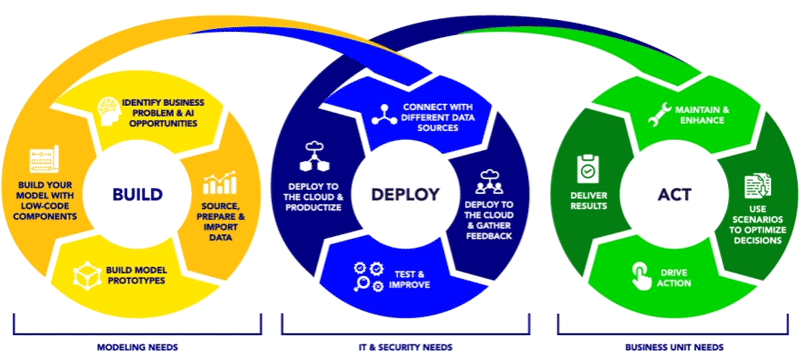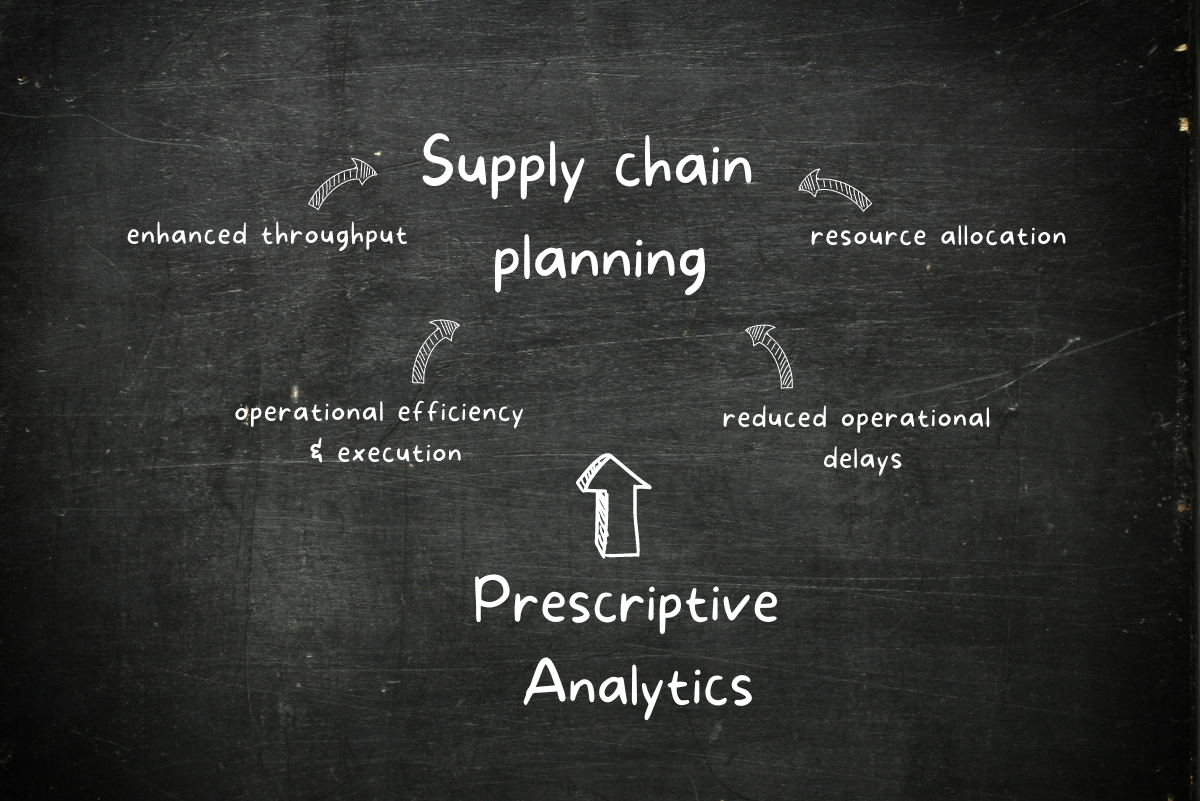ModelOps: A Winning Approach to Increase the Impact of Your Optimization Projects
Model deployment and maintenance have always been challenging. In fact, research shows that about 87% of data science models never make it into production. This means there’s a lot of effort put into models that never get adopted by the business. By contrast, at AIMMS we see that 90% of customers are likely to continue using AIMMS-based optimization models after their initial deployment. This is largely because AIMMS facilitates what has come to be known as a ModelOps approach. Let’s explore what ModelOps is and how it helps organizations ensure their analytics projects deliver value.
What is ModelOps?
According to Gartner, ModelOps (or AI model operationalization) is an approach that focuses “on the governance and life cycle management of a wide range of operationalized artificial intelligence (AI) and decision models.” ModelOps builds largely on DevOps principles like continuous improvement and continuous delivery. The big difference between regular software and AI models is that models tend to “decay” over time. They require maintenance and may need updates when business conditions change.
The goal of ModelOps is to have a holistic approach for model validation, deployment, testing and maintenance, to ensure that these steps are connected. ModelOps is also largely about automating many stages within the lifecycle, such that models can be changed and tested quickly when new situations arise.
In simple terms, ModelOps is an approach that facilitates model deployment speed and ongoing quality assurance.
ModelOps and Mathematical Optimization
Mathematical optimization is an AI technique and a type of prescriptive analytics, meaning that it’s focused on driving a course of action. Optimization describes a business problem in mathematical formulas or equations. It symbolically describes the decisions you need to make, the restrictions you need to uphold and the relations between the two, in order to achieve a given objective. The description of such business logic is called a mathematical model.
Like all AI models, optimization models require maintenance. In addition, to ensure the organization extracts value from these models, they need to be embedded into ongoing decision-making processes. To facilitate this, ease of use, integrations and scalable deployment are key. And it’s precisely in these areas where the ModelOps approach can make a difference.

AIMMS and ModelOps
To better explain how AIMMS supports ModelOps, let’s look at 3 critical stages in the model’s lifecycle:
- the build or development stage, where the focus is meeting the modeler’s needs,
- the deployment stage, where the focus lies on meeting crucial IT and security needs,
- and the act stage, where the focus is embedding the model in ongoing processes and ensuring it delivers results for the business.
Build: low code development and rapid validation with end users
With AIMMS, you can go from idea to prototype in hours, without programming code. This rapid development cycle, supported by extensive model diagnostic tools, enables you to test and validate the model quickly with end users.
As with any analytics initiative, end users need to be fully on board with the project to understand their role and how they will be using the model output. AIMMS enables you to create modern, web-based user interfaces using a rich set of data visualization and UX components. Contrary to developing decision-support apps in Python, where you need to spend considerable time creating the UI, AIMMS allows you to provide a friendly UI from the start. No coding required. Having this UI integrated into your model facilitates validation.
A powerful mathematical modeling engine with web UI capabilities carries another benefit for modelers: you can use one platform for everything instead of relying on multiple languages and technology teams. AIMMS also makes it easy to deploy your models as apps and integrate them with the rest of your technology stack.
Deploy: built-in security, cloud-based deployment and robust integration capabilities
From inside AIMMS Development, you can package your application and deploy it in one step. The application is fully managed and delivered as a service in the cloud. This has 3 important benefits:
Security is built-in and rigorously delivered
AIMMS is ISO 27001-certified. All data is encrypted at rest and in transit. We use continuous intrusion detection and an automatic vulnerability scanning system. Our security specialists perform periodic penetration tests of our cloud platform. You can determine permissions and access, and modify the UI based on roles and authorizations. In other words, you get all security needs delivered out-of-the-box and don’t need to worry about delivering them yourself.
All the IT capacity you need
AIMMS is built to scale up seamlessly when usage increases. We provide automatic capacity scaling and provisioning. This means you can easily scale up your processing power and usage without worrying about “sizing for the peaks” or predicting compute demand.
Support for integrations
Integrations are a common challenge in analytics projects. But decision-support models are only valuable if you can use up-to-date data. AIMMS can receive input data from almost any system, enabling you to make decisions with the latest information at your fingertips. You can retrieve and export data from databases, ERP systems, warehouse-management-systems, proprietary and 3rd party data services, data lakes and other big data tools. At fixed intervals, on-demand or in real-time. We also offer a managed service for building and running almost any automated data transfer.

Act: delivering results for the business and continuous improvement
As we explained above, it’s important to involve your end users in model validation from the start. This allows you to quickly incorporate user feedback to enhance your model and ensure that it meets the needs of the business. But undeniably, your business needs may change from time to time.
ModelOps implies that you think of your optimization models as products, which need regular maintenance and a roadmap for improvements. Otherwise, your solution might soon become outdated and pushed aside. It’s important to keep your model up-to-date to prevent any degradation. Quick development and development cycles make it easy to adjust the model quickly, like adding new business constraints when conditions shift.
Think, for instance, of the COVID-19 pandemic. New constraints came into play that were previously unforeseen, like factory shutdowns and road closures. With AIMMS, you can change your model’s constraints with a few clicks to reflect the new state of the business. AIMMS also comes with built-in scenario modeling capabilities, so your users can strategize by looking at greenfield studies and comparing them to the situation at hand. Let’s consider an example.
MedSpace: a hospital shift-scheduling tool built in AIMMS
MedSpace is an AIMMS-based shift scheduling tool for hospitals developed by MedWeb. The tool is used throughout the Benelux and Germany.
When the COVID-19 pandemic broke out, hospitals across the world struggled to meet surging demand, not just because of a lack of ICU beds but also personnel shortages. In the Netherlands, hospitals stopped elective procedures and non-urgent care to prevent the spread of the virus and allocate doctors to intensive care units. Hospitals and clinics using MedSpace found the tool incredibly helpful to incorporate new doctors into the ICU schedule amidst a highly volatile environment. MedSpace released a dedicated add-on that took personnel preferences and strict privacy requirements into account. Doctors could voluntarily take up shifts in the ICU with a few clicks.
The tool saves customers a lot of time in shift-creation, allowing them to go from 10 hours of planning in Excel to 4 hours or less in MedSpace. This planning agility, and the ability to quickly adapt the solution to the new reality, was incredibly valuable for both MedSpace’s creators and their customers.
Ready to adopt ModelOps?
Are you curious about ModelOps and adopting this approach for your analytics initiatives? The AIMMS low code platform makes it very easy to prototype and develop optimization models and deploy them as apps for use across the organization. Drop us a line in the comments or watch a demo to see how easy it is to go from an optimization model prototype to a fully-fledged app with AIMMS.





